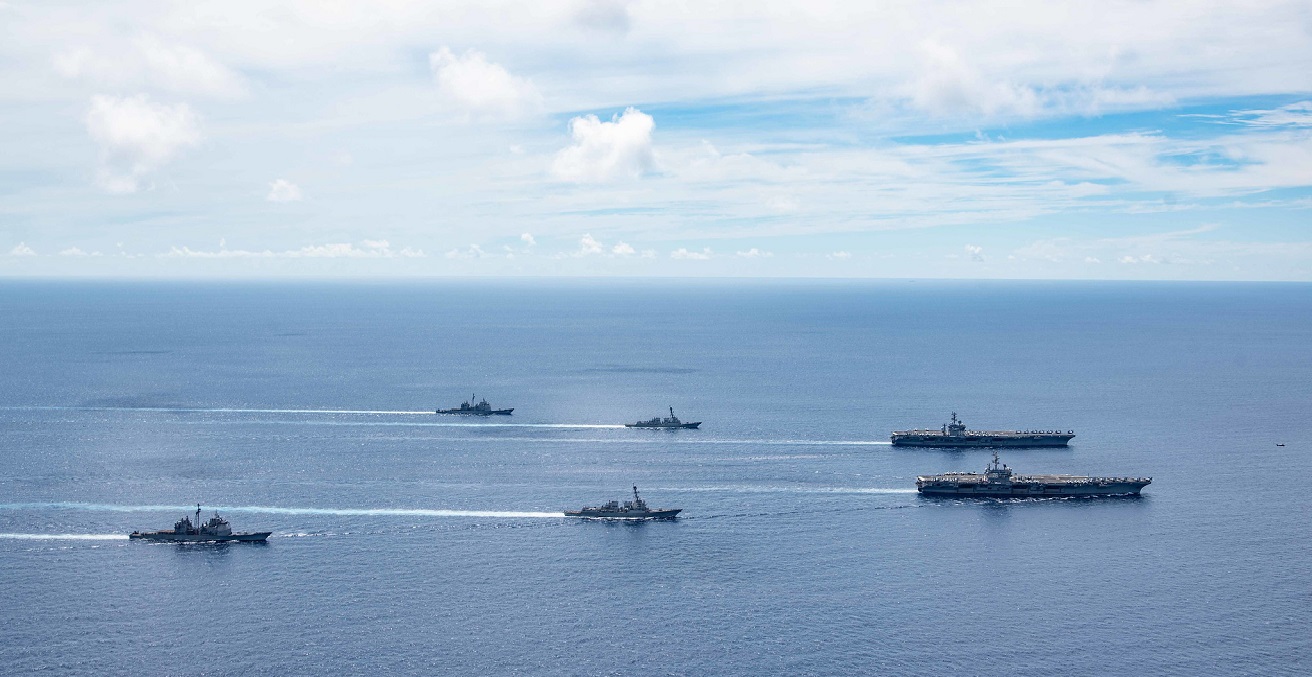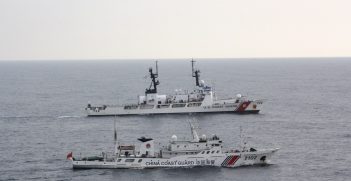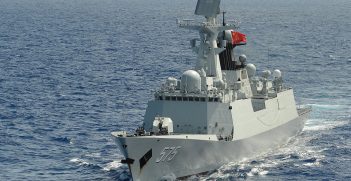What Does the US Statement on the South China Sea Mean for Security in the Asia Pacific?

The United States’ recent clarification of its position on maritime claims in the South China Sea is a small win for international law. Key questions are now, what will the US do to back up its new explicit stance, and what may it ask of its regional allies and partners?
This is an article published earlier this year and selected by our committee of commissioning editors as one of the best of 2020.
On 13 July, the United States Department of State released a statement clarifying Washington’s position on maritime claims in the South China Sea. While the US does not take sides on the sovereignty claims over contested land features, the declaration brings the US’s explicit position on maritime resources and jurisdiction into closer alignment with the 2016 South China Sea Arbitral Tribunal ruling.
The US views the People’s Republic of China’s (PRC) claim to offshore resources across most of the South China Sea as “completely unlawful.” It rejects Beijing’s claim to waters beyond a 12 nautical mile (nm) territorial sea derived from the Spratly Islands. Instead, it sees most South China Sea resources as belonging to coastal Southeast Asian states: the Philippines, Vietnam, Brunei, Malaysia, and Indonesia. The statement even goes beyond the 2016 Arbitral Tribunal ruling, which only considered disputes between the Philippines and China. It applies principles of that ruling to reject PRC maritime claims in the waters surrounding Vanguard Bank off Vietnam, Luconia Shoals off Malaysia, waters in Brunei’s Exclusive Economic Zone (EEZ), and Natuna Besar off Indonesia.
Politically, this support for maritime Southeast Asian states is the most significant aspect of the statement. Typically, the primary US interest in the South China Sea has been expressed in terms of freedom of navigation. This is despite many Asian states holding different interpretations of the transit rights of warships in various maritime zones from the US. One of the issues with freedom of navigation operations (FONOPs) is that they defend US interests and interpretation of international law, and present the US as the arbiter of excessive maritime claims, even though it has not ratified the United Nations Convention on the Law of the Sea (UNCLOS). Freedom of navigation is not mentioned in this statement as it instead employs the broader and less controversial term, “Freedom of the Seas.” While the US’s fundamental interest in freedom of navigation and overflight remain unchanged, the statement reflects the maritime interests of other states. This must be understood in the context of the US’s increasingly assertive public diplomacy on South China Sea issues, including its criticisms of the PRC’s encroachments of Vietnam’s claimed EEZ during the Haiyang Dizhi 8 standoff, in 2019.
The statement does not explicitly support the Arbitral Tribunal’s reasoning on how maritime land features should be classified as islands, rocks, low-lying, or submerged elevations. This is consequential for determining maritime zones because an island may generate an EEZ under international law, whereas other features do not (although a rock can generate a 12nm territorial sea). This omission is interesting because a number of US “islands” in the Pacific may not reach the threshold set by the Arbitral Tribunal for generating an EEZ.
Why now?
Gregory Poling, director of the Asia Maritime Transparency Initiative, makes it clear that this should not be interpreted as a significant policy shift. Rather “[i]t makes explicit a lot of things that were implicit under the previous administration.”
One of the pressing concerns in 2020 has been the PRC’s opportunism as Southeast Asian states cope with the COVID-19 pandemic. While Beijing’s recent activities may be interpreted as a continuation of “salami-slicing” tactics, their range and scope suggest an emboldened approach. These include dispatching naval planes to conduct anti-submarine drills; deploying the Chinese survey ship Haiyang Dizhi 8 in contested maritime zones; announcing new “research stations” on military bases; and unilaterally announcing the establishment of two new administrative units in the South China Sea. There are fears that, if action is not taken, the South China Sea may irretrievably fall under the control of the PRC. This would have considerable strategic consequences for regional states, and implications for the capacities of global maritime rules to sustain order.
The timing may also be explained by the heightened strategic competition between the US and the PRC. The statement reinforces US views of the South China Sea as an exemplar of the PRC’s revisionist approach to the existing order. The statement called out China’s “predatory world view” and its “bullying” and “intimidation” of smaller states. The US’s emerging Indo-Pacific strategy has emphasised the importance of preserving the so-called “rules-based international order,” pointing to this as a shared interest with allies including Australia.
Regional responses
The PRC’s response to Washington’s hardened stance was predictable. The Global Times ran a number of opposing op-eds arguing that the US is the real threat to stability in the South China Sea. One even argues that Washington was “trying to intimidate relevant regional countries and make them turn to the US for military protection.”
The response of Southeast Asian states was mixed, despite the support articulated in the statement for their maritime claims. The Philippines came out quickly with strong support. However, a meeting held a few days later between Philippine Foreign Affairs Secretary Teodoro Locsin Jr. and Chinese State Councilor and Foreign Minister Wang Yi emphasised “the positive turn around” in Sino-Philippine relations and the importance of “friendly consultation” in maritime cooperation. Meanwhile, Malaysian officials responded to Washington’s stance by criticising “military posturing” in the South China Sea, a comment that could be interpreted as including the US.
While this unilateral clarification on maritime claims is a small win for international law, it would be beneficial if a coalition of regional states were also prepared to explicitly and multilaterally support the Arbitral Tribunal findings. A key question for Australia is what will the US do to back up its new explicit stance, and what may it ask of its regional allies and partners?
Dr Rebecca Strating is the Executive Director of La Trobe Asia and Senior Lecturer in Politics in the Department of Politics and Philosophy at La Trobe University. She researches Australian politics and foreign policy, small states and maritime disputes in Asia-Pacific. She is the author of several monographs and journal articles, including “Defending the Maritime Rules-Based Order: Regional Responses to the South China Sea Disputes” published by the East West Center in 2020. In 2018, she was awarded the prestigious Boyer Prize by the Australian Institute of International Affairs for best article published in the Australian Journal of International Affairs in 2017 for the paper “Timor-Leste’s Foreign Policy Approach to the Timor Sea: Pipeline or Pipedream?”
This article is published under a Creative Commons License and may be republished with attribution.





